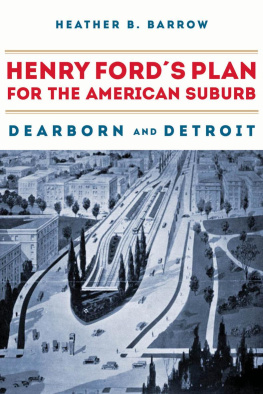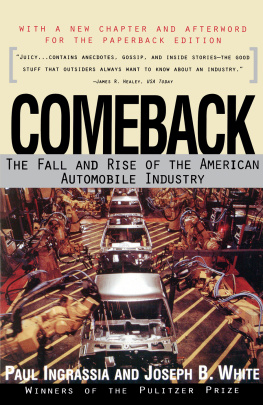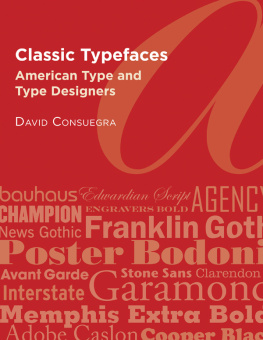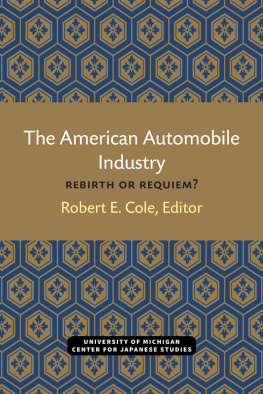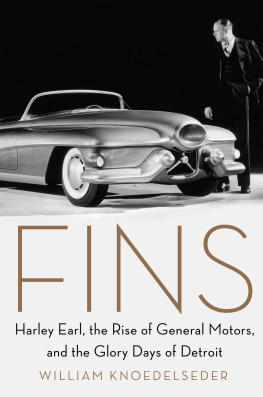Auto Opium
The automobile continues to be the privileged product of the culture of mass consumption, yet there has been little scholarly attention to what concerns consumers most - the appearance of cars. Auto Opium is the first comprehensive history of the profession and aesthetics of American automobile design. The author reveals how the appearance of vehicles became an integral part of the system of mass production and mass consumption forged in the struggles of American society.
The book traces the development of automobile design, from the first utilitarian cars around the turn of the century to the most modern of symbol-laden cultural icons. The author shows that the aesthetic qualities of vehicles were shaped by the social conflicts generated by the process of mass production. These conflicts became channeled into the realm of mass consumption, where working Americans demanded beautiful, stylish, and constantly improving cars to compensate them for the deprivations of mass production. Creating a unique blend of business, social, and cultural history, Auto Opium connects the social struggles of America to the organizational struggles of designers and the marketplace struggles of firms.
David Gartman is Associate Professor of Sociology, Department of Sociology and Anthropology, University of South Alabama.
Auto Opium
A social history of American
automobile design
David Gartman
First published 1994
by Routledge
2 Park Square, Milton Park, Abingdon, Oxon, OX14 4RN
Simultaneously published in the USA and Canada
by Routledge
270 Madison Ave, New York NY 10016
Transferred to Digital Printing 2005
1994 David Gartman
Typeset in Times by LaserScript, Mitcham, Surrey
All rights reserved. No part of this book may be reprinted or reproduced or utilized in any form or by any electronic, mechanical, or other means, now known or hereafter invented, including photocopying and recording, or in any information storage or retrieval system, without permission in writing from the publishers.
British Library Cataloguing in Publication Data
A catalogue record for this book is available from the British Library
Library of Congress Cataloging in Publication Data
A catalog record for this book has been requested
ISBN 0-415-10571-4 (hbk)
ISBN 0-415-10572-2 (pbk)
Religion is, in fact, the self-consciousness and self-esteem of man who has either not yet gained himself or has lost himself again. It is the fantastic realization of the human being because the human being has attained no true reality. The wretchedness of religion is at once an expression of and a protest against real wretchedness. Religion is the sigh of the oppressed creature, the heart of a heartless world and the soul of soulless conditions. It is the opium of the people.
Karl Marx
The fact is that the automobile became a hypnosis. The automobile became the opium of the American people.
Fortune
To Betty Gartman
A woman who holds up more than half my sky
Preface
When researching this book in Detroit, I was given a tour of the General Motors design studios by the vice-president for design, Charles Jordan. I was whisked through the impressive facilities, experiencing an exhilarating rush of enticing images that can only be compared to a visual rollercoaster ride. Catching my breath before entering yet another room on my ride, I asked Jordan about a slick, futuristic scale-model car on a pedestal outside the door. This, he pronounced proudly, is our latest design religion. Design religion? I queried, my curiosity piqued by this intriguing terminology. Yes, he replied. We like to give people something to believe in.
This analogy between automotive style and sacred beliefs immediately evoked in me two associations, one intellectual, the other emotional. At the intellectual level, Marx's famous characterization of religion as the opium of the people flashed through my mind. Could stylish consumer products like cars function as a similarly narcotizing ideology, the false consciousness of contemporary capitalism?
But this bit of intellectualizing, conditioned by my theoretical allegiances, was quickly overwhelmed by an emotional reminiscence of more primordial origins. While growing up in a working-class family in a Houston suburb, automobiles had given my family, especially my father and me, something to believe in, a meaning and focus for our lives. Some of my earliest and fondest memories are of automobiles -washing, repairing, riding, and vacationing in them. My father's identity depended fundamentally on cars - I'm a Chevy man, he resolutely declared, and never bought anything else. The workaday world of the oil refinery brought him few gratifications and numerous indignities, many of which I remember being heartfully recounted at supper time. But these wounds were soon soothed by the comforting salve of automotive consumerism. Regardless of the indignities of the workday, my father found upon returning home his shiny green 1955 Chevrolet with its powerful V-8 engine and rumbling dual exhausts waiting in the garage of our working-class suburban home ready to provide empowerment and escape. In it our family could leave the work world behind and take our place among the amorphous mass of middle-class Americans on the road, at the park, in the shopping mall.
Like so many working-class kids, I was soon infatuated with cars. At age ten I could identify every make and model from the distance of a suburban block. In school I filled reams of paper with drawings of cars, and at home I built model cars and pored over the pages of Hot Rod Magazine. My main aspiration in life was to get a job - any job - that paid enough to buy a big suburban house and allow me to build hot rods with my dad.
Were my dad and I simply dupes suffering under the delusions of false consciousness, oblivious to the inequities and indignities of America's class system due to the obscuring ideology of automotive consumerism? In confrontation with one another, both my intellectually hostile and emotionally pleasurable images of automobiles seemed simplistic. Autos and other consumer goods did not delude us about the existence of social inequities in postwar America. They merely made them more tolerable and painless. My family was daily made aware of class inequities but felt unable to do anything about them. We, like most working Americans, were merely trying to make the best life we could with the limited opportunities provided us. And participating in America's automobile culture was part of that limited but tolerable life we constructed.
Perhaps the opium of ideology - whether religious or consumerist -operates more like an actual analgesic than most Marxists suspect. People take painkillers to alleviate the symptoms of their affliction, not to fool themselves about its existence. They continue to be aware of its presence and hope for a cure, but in the meantime seek to make a bad situation at least tolerable. Working Americans struggled throughout this century for a better life for themselves and their families. But when social cures for their ills seemed remote, they were often forced to settle for the individual palliative of consumer goods like autos. They actively struck the best deal possible and were not deluded dupes.


